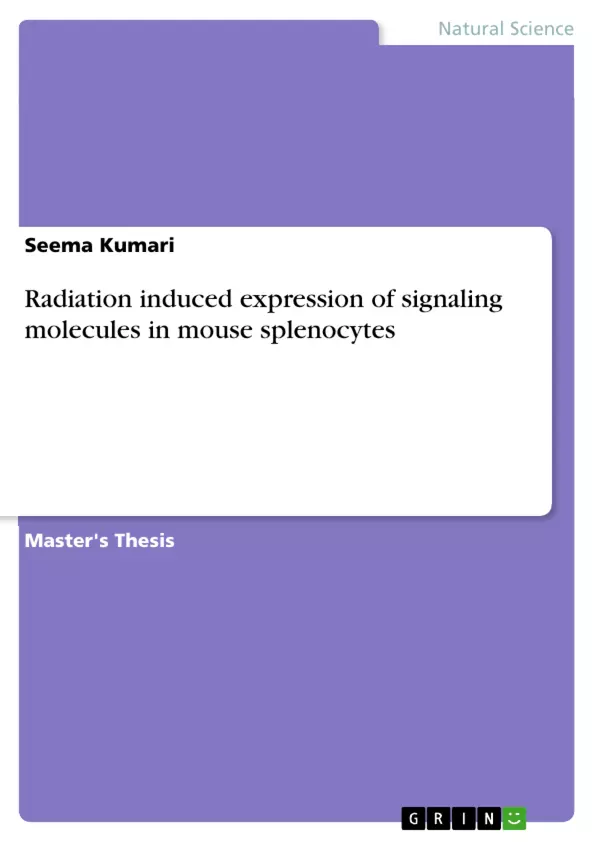The hazards of exposure to ionizing radiation were recognised shortly after Roentgen’s discovery of x-rays in 1895. Acute skin cancer, leukaemia and other biological damage were observed in the individuals working with x-ray generator. In the year, 1898 Becquerel performed the first recorded experiment in radiobiology, from this earlier study of radiobiology began. Since that time, a tremendous amount of research has been done attempting to interpret the reactions which take place from the moment that radiation enters a living cell until some permanent damage is produced. From beginning to end, these initial reactions are probably completed in a millionth of a second, making them very difficult to study. For this reason, it is still not known which of the many chemical or biochemical reactions brought about by ionizing radiation are responsible for initiating biological damage.
Ionizing radiation is energy transmitted by X-rays, gamma rays, beta particles (high-speed electrons), alpha particles (the nucleus of the helium atom), neutrons, protons, and other heavy ions such as the nuclei of argon, nitrogen, carbon, and other elements. X-rays and gamma rays are electromagnetic waves like light, but their energy is much higher than that of light (their wavelengths are much shorter). Ultraviolet (UV) light is a radiation of intermediate energy that can damage cells like sunburns, but UV light differs from the forms of electromagnetic radiation mentioned above in that it does not cause ionization (loss of an electron) in atoms or molecules, but rather excitation (change in energy level of an electron). The other forms of radiation particles are either negatively charged (electrons), positively charged (protons, alpha rays, and other heavy ions), or electrically neutral (neutrons).
[...]
Inhaltsverzeichnis (Table of Contents)
- Introduction
- Ionization
- Affect of ionizations on cells
- Characteristics of DNA damage by radiation exposure
- Biological effects differ by type of radiation
- Direct effect
- Indirect effect
- Cellular sensitivity to radiation
- Organ sensitivity to radiation
- Effect of radiation dose
- Biological Response to High Doses of Radiation
- Signalling molecules
- a) PKC
- b) Protein kinase C-delta (PKCδ)
- c) MAPKs (Mitogen-Activated Protein Kinases)
- d) P44/42
- e) p38
- Cytoprotective pathways
- Apoptosis pathways
- Cellular response to radiation
- Materials and Method
- Experimental animal as mice
- Irradiation of mice
- Isolation of splenocytes
- Estimation of protein by bicinchoninic acid method
- Preparation of Standards and Working Reagent
- Procedure
- Western blotting
- Lysis buffers
- Running, Transfer, and Blocking buffers
- Procedure
- Results and Discussion
- References
Zielsetzung und Themenschwerpunkte (Objectives and Key Themes)
This research project investigates the expression levels of signaling molecules involved in regulating cell death and survival in the spleen, a radiosensitive organ, under radiation stress. The primary goal is to understand how radiation exposure affects these signaling pathways and their role in determining cellular fate.
- The impact of ionizing radiation on cellular components, particularly DNA.
- The role of signaling molecules, such as PKC, MAPKs, and p38, in regulating cell death and survival pathways.
- The influence of different radiation doses on the expression levels of key signaling molecules.
- The interplay between cytoprotective and apoptotic pathways in response to radiation stress.
- The mechanisms involved in DNA repair and cell cycle checkpoints following radiation exposure.
Zusammenfassung der Kapitel (Chapter Summaries)
- Introduction: This chapter provides a foundational overview of ionizing radiation, its effects on cells, and the mechanisms of DNA damage. It introduces the concept of cellular and organ sensitivity to radiation and the biological responses to high and low doses.
- Signalling molecules: This chapter delves into the intricacies of signaling molecules, specifically PKC, MAPKs, and p38, highlighting their roles in various cellular processes, including cell death and survival.
- Cellular response to radiation: This chapter examines how cells respond to radiation exposure, focusing on DNA repair systems and cell cycle checkpoints that maintain genomic integrity.
- Materials and Method: This chapter outlines the experimental methodology employed in the research project, including animal selection, irradiation procedures, splenocyte isolation, protein estimation, and Western blotting techniques.
Schlüsselwörter (Keywords)
The primary keywords and focus topics of this research include ionizing radiation, radiosensitive organ, spleen, signaling molecules, PKC, MAPKs, p38, apoptosis, cell death, survival, DNA repair, cell cycle checkpoints, and Western blotting.
- Arbeit zitieren
- Seema Kumari (Autor:in), 2004, Radiation induced expression of signaling molecules in mouse splenocytes, München, GRIN Verlag, https://www.grin.com/document/209871



